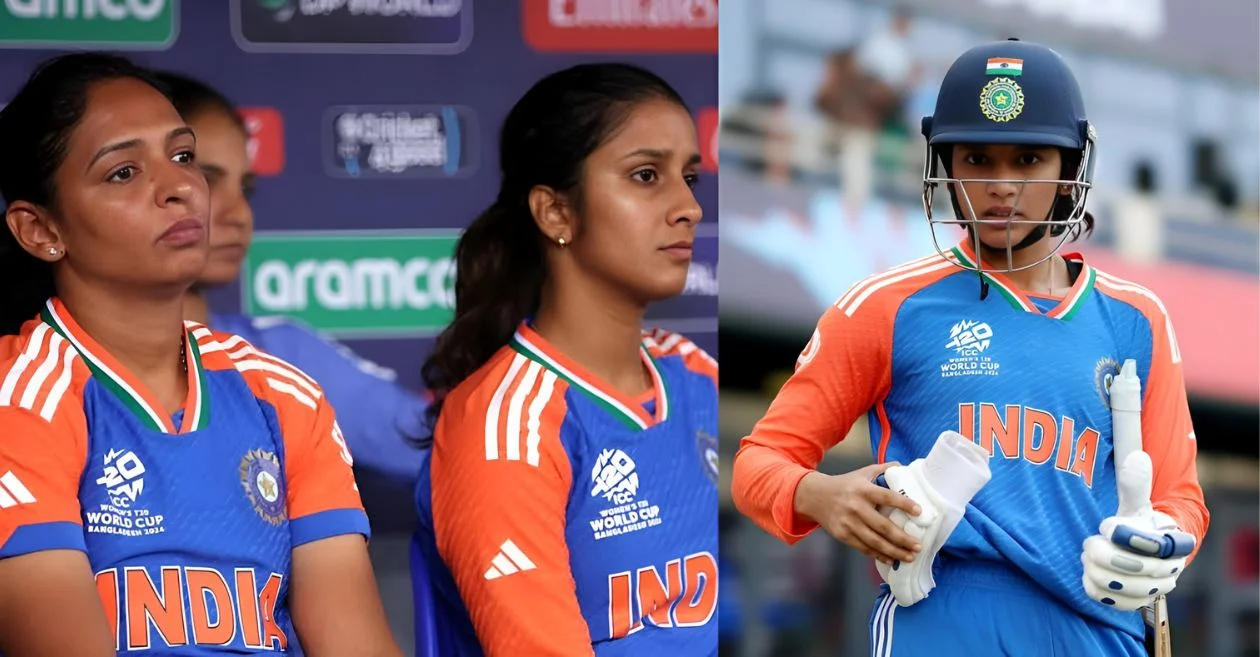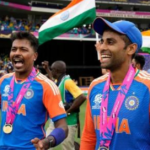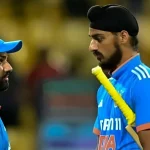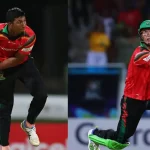India’s hopes of making it to the ICC Women’s T20 World Cup 2024 semifinals came to an abrupt and heartbreaking end, as for the first time in eight years, the team failed to progress past the group stage. Despite being one of the pre-tournament favorites, their campaign was cut short in dramatic fashion following a string of close matches and a series of missed opportunities.
The final blow came when New Zealand secured a commanding 54-run victory over Pakistan in their last group-stage match on October 14, booking their place in the semifinals alongside Australia and eliminating both India and Pakistan from the tournament. This marked a crushing conclusion for India, who had been eyeing a deep run in the tournament. This article takes an in-depth look at India’s exit, the key factors that contributed to their downfall, and the sharp reactions that followed.
The Group Stage Struggles: India’s Ups and Downs
India’s journey in the ICC Women’s T20 World Cup 2024 began with a strong sense of optimism. Led by veteran skipper Harmanpreet Kaur, the team had a blend of experience and youthful talent, with key players like Smriti Mandhana, Jemimah Rodrigues, and Deepti Sharma forming the core of the batting and bowling line-ups. However, the group stage proved to be a rollercoaster ride for the Indian women’s cricket team.
After a solid opening win against South Africa, where India’s bowling attack outclassed the opposition, cracks began to show in their performances. The team struggled with inconsistency, particularly in high-stakes matches against top-tier teams like England and Australia. Their batting lineup, which had been touted as one of the strongest in the tournament, faltered in critical moments, leaving too much pressure on the bowlers to salvage victories.
India’s failure to convert key moments, particularly with the bat, was evident throughout the group stage. Close matches that could have gone either way ended up slipping through their fingers, creating an atmosphere of growing frustration within the camp. This inconsistency, combined with a lack of finishing power in crucial games, ultimately set the stage for their elimination.
The Decisive Loss to Australia: A Campaign-Ending Blow
The tipping point for India’s campaign came in their final group-stage fixture against arch-rivals Australia, a match that carried immense importance for both teams. Needing a win to keep their hopes of semifinal qualification alive, India faltered under pressure, losing by nine runs in a match that was within their grasp for much of the second innings.
Chasing a target of 152, India suffered early setbacks when key openers Smriti Mandhana and Jemimah Rodrigues were dismissed for low scores. These early losses put the team on the back foot, leaving a mountain to climb in the middle overs. Captain Harmanpreet Kaur did her best to steady the ship, playing a valiant knock of 54 not out, while Deepti Sharma chipped in with a crucial 29 off 25 balls. However, the team struggled to accelerate when it mattered most.
In the critical final over, India needed 14 runs to win off Annabel Sutherland’s bowling. With two singles off the first two balls, India’s hopes faded, as the required run rate continued to climb. Harmanpreet’s cautious approach in this high-pressure situation raised eyebrows, and despite her fighting effort, India fell short of the target. This defeat placed India’s fate in the hands of New Zealand and Pakistan, with the semifinal race hanging by a thread.
New Zealand’s Triumph Seals India’s Fate
After the heartbreaking loss to Australia, India’s hopes of advancing to the semifinals rested on the outcome of the New Zealand-Pakistan group match. Unfortunately for India, New Zealand put on a clinical display, thrashing Pakistan by 54 runs and booking their own place in the semifinals, thereby eliminating both India and Pakistan from the tournament.
New Zealand’s bowlers played a pivotal role in dismantling Pakistan’s batting lineup, and their convincing victory left India with no path to qualification. It was a crushing blow for Harmanpreet Kaur and her team, who had come into the tournament with high expectations but found themselves falling short when it mattered most.
India’s early exit marked the first time in eight years that the team had failed to progress beyond the group stage of the Women’s T20 World Cup, a result that left players and fans devastated. The disappointment was palpable, as India had been widely regarded as one of the top contenders to lift the trophy this year.
The Role of Senior Players Under Scrutiny
In the aftermath of India’s elimination, there was a growing sense of frustration among fans and experts alike regarding the performances of the team’s senior players. While Harmanpreet Kaur had led from the front with her batting, questions were raised about her leadership decisions, particularly in the closing stages of the match against Australia. Moreover, the inability of key players like Smriti Mandhana, Jemimah Rodrigues, and Deepti Sharma to step up in critical moments added to the disappointment.
Veteran cricketer Punam Raut, who was not part of the World Cup squad, took to social media to express her views on the team’s performance. Without naming anyone specifically, Raut’s pointed tweet was widely interpreted as a critique of the senior core of the Indian team, particularly Harmanpreet, Mandhana, and Deepti, all of whom have played over 100 T20Is.
Raut’s tweet struck a chord with many fans who felt that despite their vast experience, India’s seasoned players had failed to rise to the occasion when it mattered most. Her comments sparked debate about the leadership within the team and whether India’s most reliable players were capable of handling pressure in knockout situations.
Punam Raut’s Criticism Ignites Debate
Punam Raut’s tweet sent ripples through the Indian cricket community. While she did not directly name any players, the timing and context of her remarks made it clear that she was referring to the team’s senior players, who had been expected to lead India to glory but fell short. Raut’s words echoed the sentiments of many fans who were left wondering whether India’s golden generation of players had lost their ability to perform in high-pressure scenarios.
The tweet read: “Experience counts for nothing if you can’t deliver when it matters. Senior players must lead by example.”
Although the tweet was brief, its impact was significant, as it raised questions about the accountability of India’s most experienced players. With over 100 T20Is to their names, players like Harmanpreet Kaur and Smriti Mandhana had been relied upon to guide the team through difficult situations, but their inability to do so against Australia and in other key matches led to criticism from all quarters.
Raut’s remarks also highlighted a deeper issue within the team – the lack of a clear leader who can inspire and galvanize the squad when the pressure is at its peak. While Harmanpreet Kaur has been a stalwart of Indian women’s cricket for many years, her decision-making in the closing stages of the match against Australia raised concerns about her ability to lead the team to glory in major tournaments.
The Way Forward: What Needs to Change for India?
India’s premature exit from the Women’s T20 World Cup 2024 has sparked a larger conversation about the future of women’s cricket in the country. While the team has made great strides in recent years, consistently challenging the top teams in the world, there remains a sense that they have not yet reached their full potential in ICC tournaments.
One of the key areas that needs to be addressed is the team’s ability to handle pressure in knockout matches. Time and again, India has come close to achieving glory but has fallen short at the final hurdle. Whether it’s the 2017 World Cup final, the 2020 T20 World Cup final, or this year’s group-stage exit, the pattern is clear: India struggles to close out games when it matters most.
The Indian cricket board (BCCI) may need to consider a more proactive approach to nurturing young talent and ensuring that there is a pipeline of players ready to take over from the current senior core. While players like Shafali Verma and Richa Ghosh have shown promise, the team will need more depth in both the batting and bowling departments to compete at the highest level.
A Painful Lesson, But Hope for the Future
India’s exit from the ICC Women’s T20 World Cup 2024 is undoubtedly a painful moment for the team and their fans. After being considered one of the favorites to win the tournament, their early exit will be seen as a missed opportunity. However, it also presents a chance for introspection and growth.
The criticism from figures like Punam Raut, while harsh, reflects the high expectations placed on the team. Indian women’s cricket has come a long way in recent years, and there is no doubt that they have the talent to succeed at the highest level. The challenge now is to learn from this setback, address the issues that led to their downfall, and come back stronger for future tournaments.
With a new generation of players emerging and the backing of a passionate fan base, India’s women’s cricket team has the potential to bounce back and reclaim their status as one of the top teams in the world. While the 2024 T20 World Cup may not have gone as planned, there is every reason to believe that India’s best days are still ahead.
Please check for information on the best betting sites in India – https://selectory.org/best-betting-sites/















